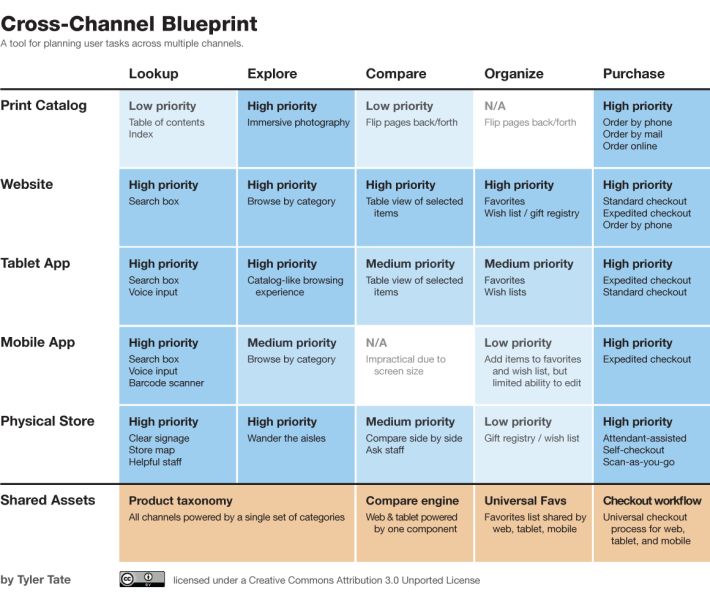Experience mapping is no panacea. It will not provide immediate answers outright. Instead, maps are compelling visualizations that draw others into important conversations about creating value. Your ultimate goal is creating an inclusive dialog within the organization, not simply creating a diagram.
Consider whether you need a map at all and, if so, which is most appropriate. But also consider the many potential benefits of mapping experiences:
1. Mapping helps build empathy
It’s often amazing how little organizations know about the experiences that the people they serve actually go through. Experience maps shed light on real-world human conditions. In doing so they instill empathy into an organization.
Bruce Temkin, a leader in customer experience management, stresses the relevance and importance of such mapping activities. He writes in a blog post:
Companies need to use tools and processes that reinforce an understanding of actual customer needs. One of the key tools in this area is something called a customer journey map… Used appropriately, these maps can shift a company’s perspective from inside-out to outside-in.
2. Mapping provides a common “big picture”
Diagrams serve as a shared reference, helping to build consensus. In this sense, mapping is a strategic tool: it influences decision making at all levels and leads to consistency in actions.
For instance, Jon Kolko, VP of Consumer Design at Blackboard, believes diagrams address “alignment attrition”—the tendency to get out of sync with one another. He writes for the Harvard Business blog:
A visual model becomes one of the most effective tools for minimizing alignment-attrition. A visual model captures and freezes a thought in time. By building a visual model together, alignment is offloaded to and “frozen in” the diagram. Your thoughts, opinions, and views will change, but the diagram won’t, and so you’ve added a constraining boundary to the idea—and a tool for concretely visualizing how the product vision is changing.
2. Mapping breaks down silos
People experience a product or service in a holistic way. Ideal solutions can easily cross an organization’s department lines. Illustrations of the customer experience typically reveal divisional joints in an organization. Discussion around them sparks cross-department collaboration.
Consider this cross-channel blueprint created by Tyler Tate, an entrepreneur and expert in search system design. It aligns user behavior (along the top of the chart) with channels (vertically on the left) and support from the organization (the bottom row).

3. Mapping brings focus
In a study in 2011 by Booz and Company, a majority of the 1800 executives surveyed indicated they were unable to focus on business strategy: they are being pulled in too many directions. Take deliberate steps to bring coherency into all aspects of your business.
Diagrams represent such a explicit step: they inherently match outward and inward-facing endeavors. In doing so, they bring focus and coherency to organizations.
4. Mapping reveals opportunities
Visualizations offer an immediacy of comprehension, providing insight into previously unnoticed value-creation opportunities. Indi Young describes this potential in a common response to her mental model diagrams from stakeholders:
I have invited executives to … stand in front of the diagram on the wall and walk from the left to right. This kind of walkthrough is quick, to the point, and stays in the context of “missed” and “future” opportunities that executives usually focus on. Many executives have told me that they’re never before seen all this information collected so succinctly in one place. (Indi Young. Mental Models (Rosenfeld Media, 2009)
While the diagrams themselves don’t give an immediate solution, their presentation to the team often has an ah-ha effect.
5. Maps enjoy longevity
Because they uncover fundamental human needs and emotions, . Once completed, diagrams tend not to change very quickly. Maps of an experience generally remain valid for years.
A mental model diagram of why and how firms generate new business, for instance, is not likely to change so rapidly. Consider this example of new business activities for an architectural firm.

Learn more about the benefits and process of mapping in my book, Mapping Experiences.

Pingback: Benefits of Mapping Experiences – Unofficial BBBY Design Blog